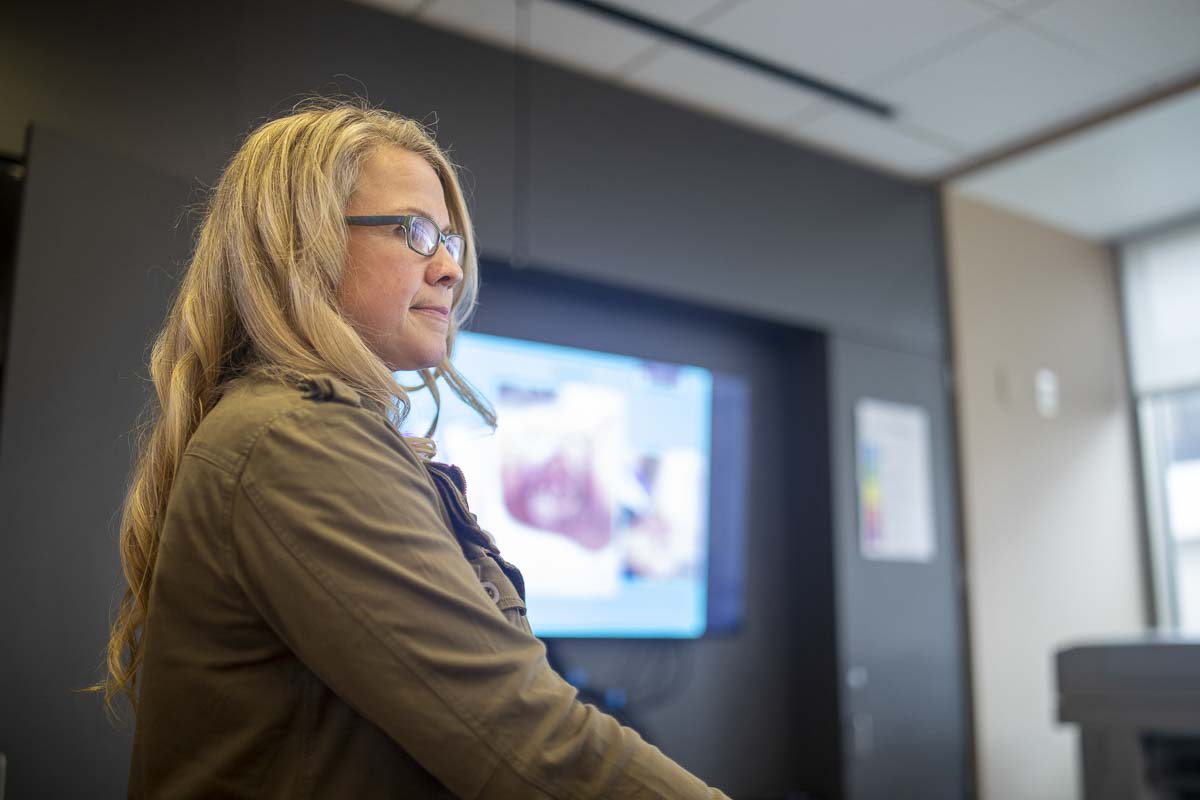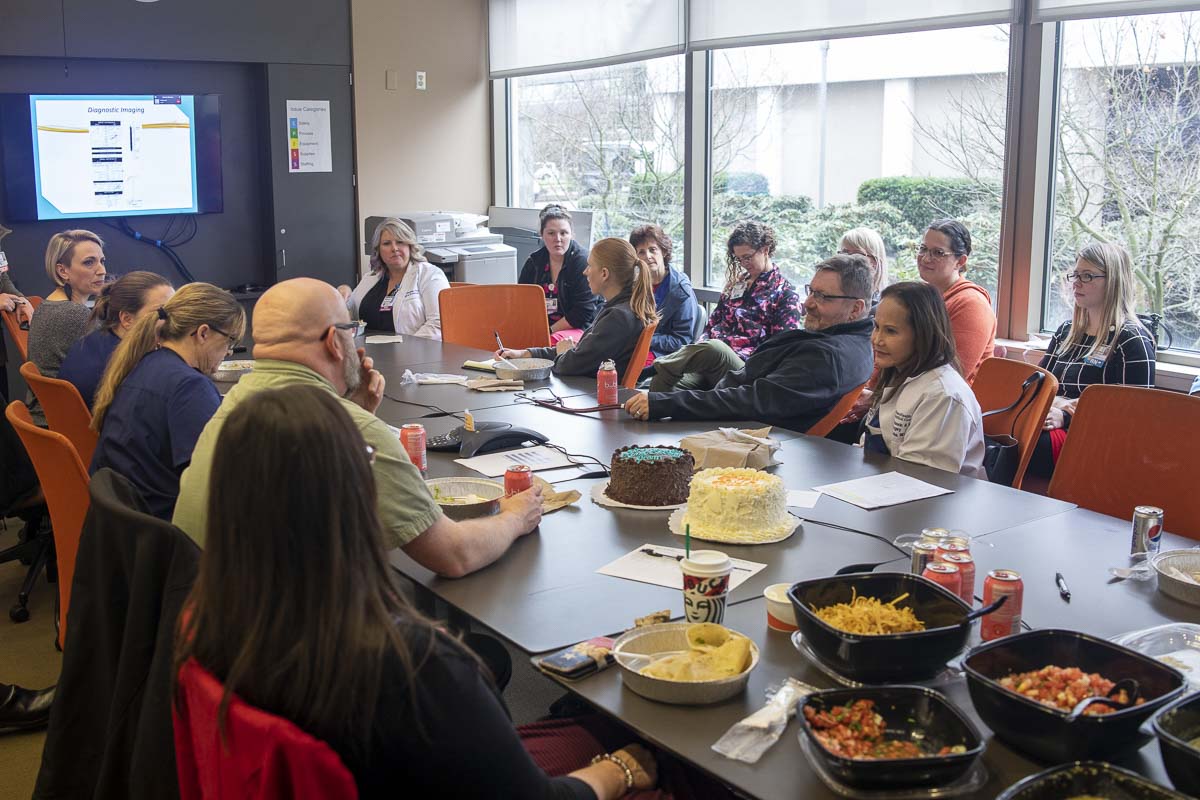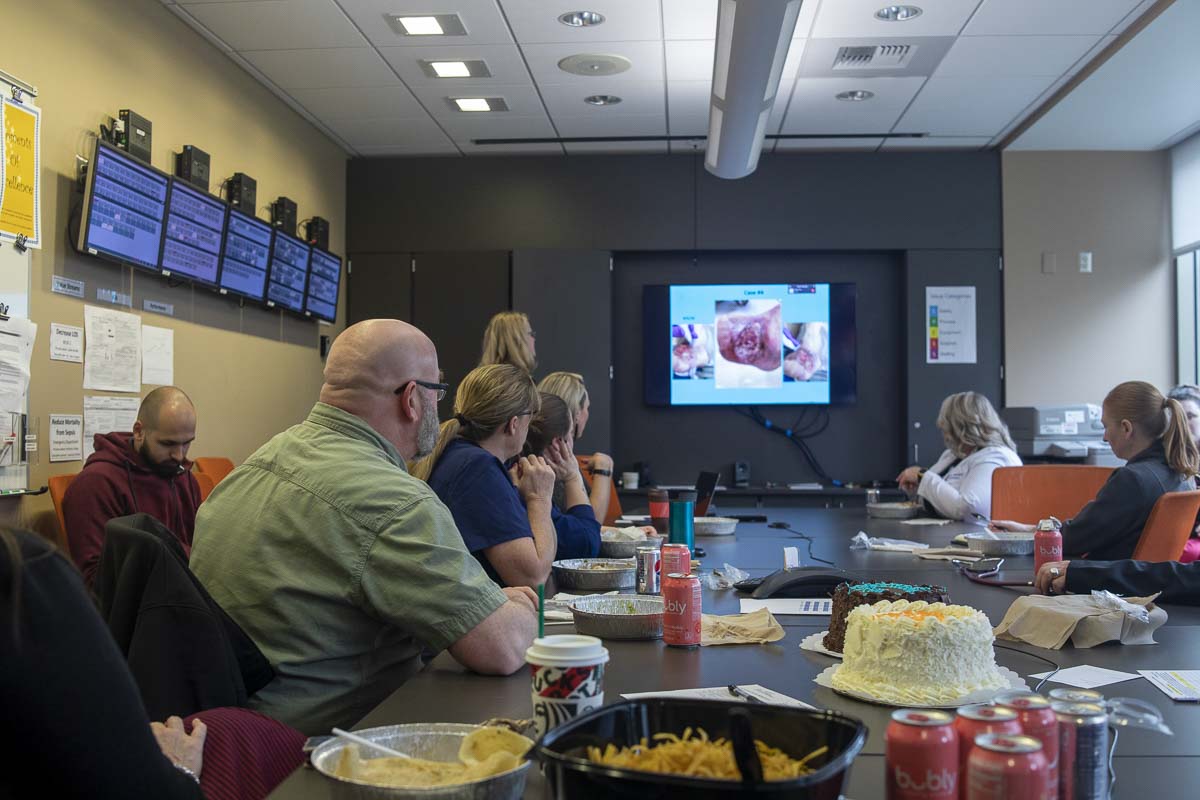The group demonstrates a growing trend of doctors helping with cases they’re not directly involved in
VANCOUVER — In a nondescript conference room at PeaceHealth Southwest Medical Center in Vancouver, a group of doctors, nurses, and other medical professionals eat a catered lunch and discuss cases. On a projector screen, images of badly infected limbs flash by.
The medical professionals, being who they are, continue eating their lunch, unfazed. Between bites of tortillas they use terms like “venous reflux” and “occlusion.”
None of this seems particularly remarkable at first, until you realize these doctors and nurses come from a wide range of medical specialties, and are giving up their lunch hour to hear about cases that, quite often, are not their own.

Monthly meetings of the Limb Salvage group started a few years ago, thanks to Jill Sommerset, a vascular technician who heard about similar programs at other hospitals. That led her to Florida, where she studied the program and brought it back to PeaceHealth Southwest, where she says leadership was quick to say yes.
“It’s exactly what we’ve been trying to do, and it takes quite a bit of time,” says Nate Vogt, director of medical operations for PeaceHealth Southwest Medical Group in Vancouver. “And it was pretty impressive to see somebody like Jill Sommerset, who was a per diem ultrasound tech, put that together in short order.”
Groups like the limb salvage one are fairly new to the Pacific Northwest, though there are other programs around the country. But Sommerset says they are the only group she knows of that meets in person on a monthly basis. Other groups generally share notes, make phone calls, or use Internet message boards.

That degree of commitment took time, and a lot of face-to-face meetings to get doctors to agree to take an hour out of their busy schedules each month, gather notes on patients, and share them with a roomful of other professionals.
“But it took on a life of its own, and people saw the good work that we were doing,” Sommerset says. “They heard about it and they wanted to be part of it, because these are their patients. And, at the end of the day, patients matter.”
Currently, the group includes foot specialists, wound care specialists, nurses, vascular surgeons, orthopedic surgeons and, occasionally, a plastic surgeon, along with cardiologists, and interventional radiologists.
During the three dozen or so meetings, Dr. Riyad Karmy-Jones, a thoracic trauma surgeon, estimates the group has discussed at least 140 cases.
“And you could multiply that by at least five of its impact to the community,” he says, noting that he has returned to his patients following previous meetings and suddenly realized a possible treatment mentioned in connection with a different case could apply to someone else.
“A lot of these patients are index cases that apply to other patients,” says Karmy-Jones. “So Patient X with this problem, everyone can leave and realize that five other patients we’re co-managing, it’s the same solution because it’s the same issues with the same approach.”

Sometimes, he says, the realization may be that an amputation might, in fact, be the best course of treatment. Other times it leads to a decision to hold off and see what happens with less invasive measures.
“We spend a lot of time not operating on people, not doing procedures on people,” he says, “trying to get out of the way of nature to help it heal. But the impact spreads far more than simply the number of patients who have been listed.”
“For me, it’s an opportunity to really do right by our patients,” says Dr. John Dykstra. “Really talk the problems out as a team rather than kind of in our little individual silos.”
Amy Lara, a registered nurse who works in wound care and has become Sommerset’s assistant on the limb salvage program, says the ability to interface with medical professionals from across the spectrum has made it much easier to potentially diagnose or treat a serious injury.
“When we can’t seem to find a solution, it’s definitely a big roller coaster,” says Lara, “and having the limb salvage team has been huge, because it opens it up to where, when we’re having trouble, we can ask for help from other people. And that’s really been a huge deal.”
During the meeting, the team doesn’t just discuss the medical aspects of a patient’s care. There is discussion of their living situation, and how potential courses of treatment could impact them from a personal standpoint. The level of personal detail known about the people being cared for goes far beyond simple medical treatment.
That is intentional, says Dr. Desarom Teso, a vascular surgeon and current chief of staff at PeaceHealth Southwest.
“If the person is living in a car, let’s say, the likelihood of them taking care of their diabetes or their other vascular issues is going to be minimal,” he says. “So we want to know that we can tailor our treatment to the patients. So more and more, we’re taking a more holistic approach to taking care of the patients.”
In addition to bringing together the limb salvage group, Sommerset and Teso have been instrumental in introducing a new procedure to help get a better grasp on blood flow to a limb.
The usual method has been the Ankle-Brachial Index, which compares blood pressure at the patient’s ankle compared to another limb, such as the arm.
“Now, that’s a little insensitive,” says Dr. Karmy-Jones, “because about a third of patients, you can’t do that for a number of reasons, mainly because their blood vessels are so calcified.”
In the procedure Sommerset helped pioneer, an ultrasound is used instead to measure blood flow in the foot.
“And what we’re finding is that it’s sort of changing the approach to vascular surgery across the country,” says Karmy-Jones. “We have universities literally all over the world … asking to come and learn from us how to do this study.”
Sommerset says she’s also hopeful that the idea behind the limb salvage program — bringing separate specialties together to help patients outside of their own — spreads to other areas of the healthcare system.
Vogt says that’s the long-term goal for PeaceHealth Southwest, especially with the complicated landscape of health insurance.
“It’s just such a perfect example of why I’m in healthcare,” he says. “People working with each other to serve patients collectively. It’s just really inspiring. So I’m really proud to sit in the room here and enjoy the show.”




